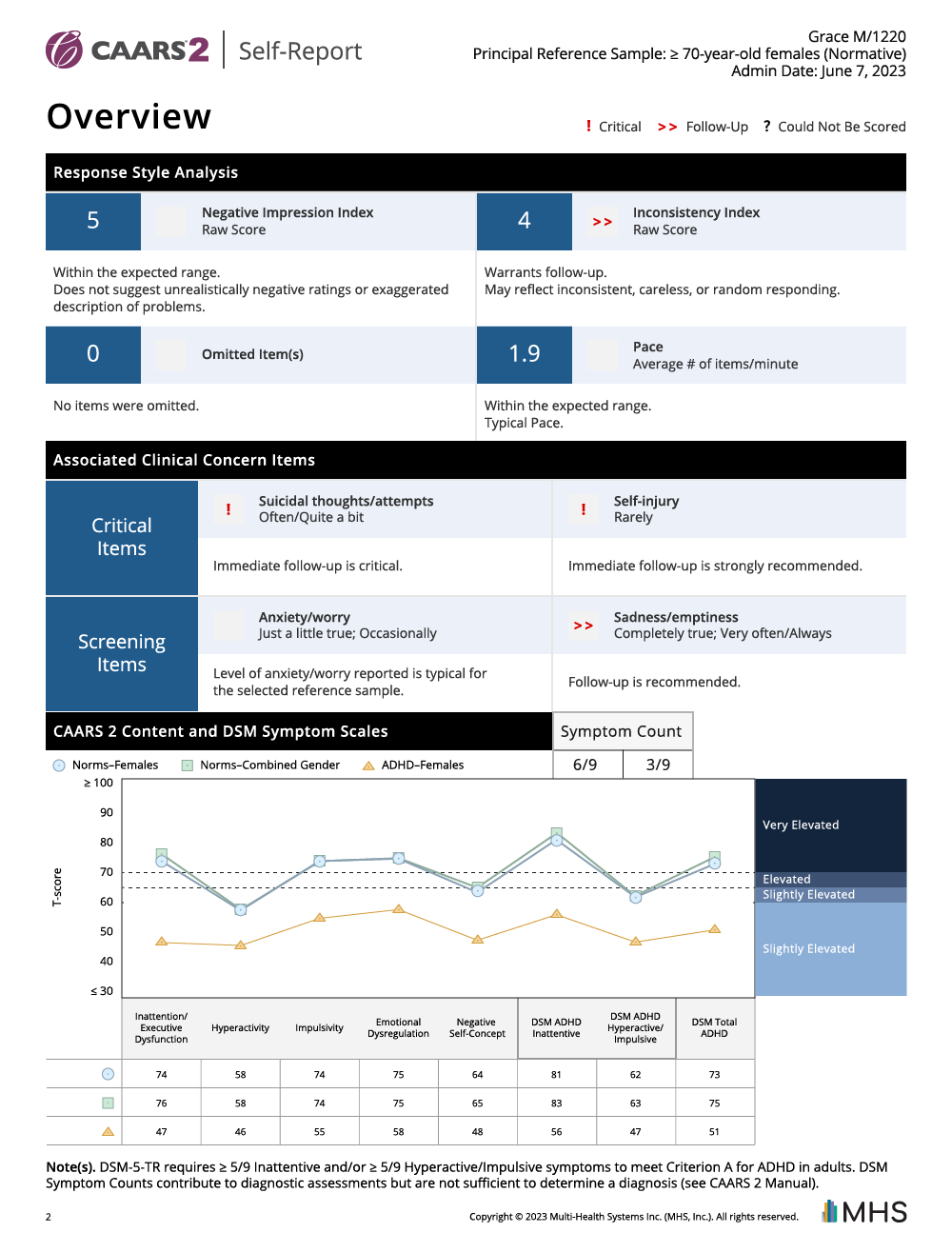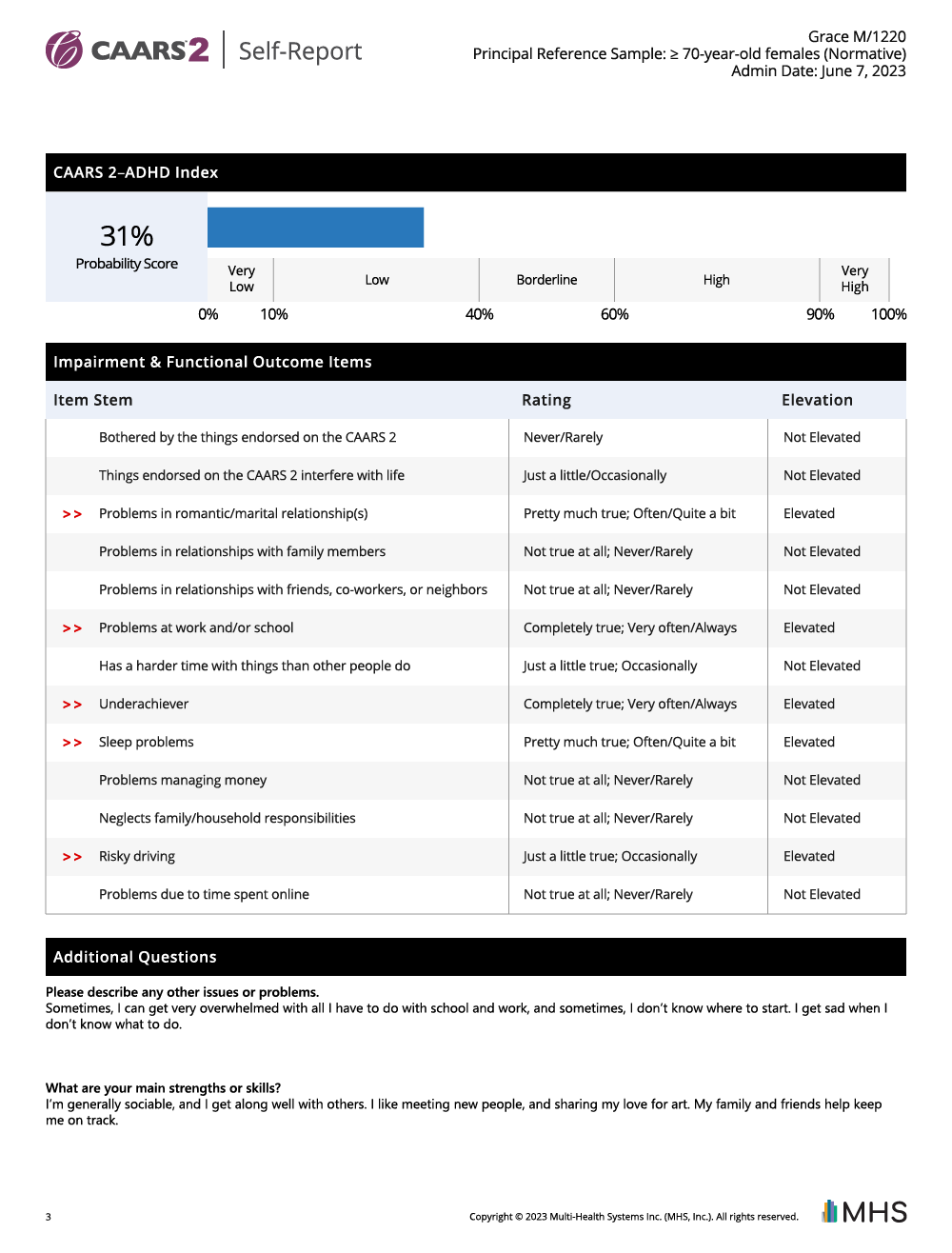CAARS 2 Manual Chapter 4: Interpretation Overview |
The following guidelines facilitate responsible and accurate interpretation of the CAARS 2 results and help
qualified users avoid common interpretive errors. These guidelines funnel from a broad overview into important
details, before finishing with the integration of both top-down and bottom-up perspectives. This same sequence is
mirrored in the CAARS 2 reports.
The interpretation sequence begins with an examination of the Response Style Analysis to provide context for
interpreting the results and to facilitate judgments regarding the validity of ratings. This step is followed by
considering Associated Clinical Concern Items that may warrant prompt attention. Next is an examination of
core and
associated features of ADHD through a survey of the CAARS 2 Scale Scores, including examinations of the
Content
Scales, DSM Symptom Scales, and the CAARS 2–ADHD Index. Next comes careful consideration of important item-level
information, including items contributing to the CAARS 2 Scales, the Impairment & Functional Outcome Items,
and the
Additional Questions, to clarify the basis for scale score elevations. Finally, these layers are integrated
within a
single rater as well as across ratings (e.g., integrating Self-Report with Observer results, considering more than
one observer’s ratings, or across different points in time such as when monitoring progress). As a whole, this
interpretation sequence provides a template for understanding CAARS 2 results. Although likely to be effective in
most contexts, these guidelines are not intended to represent the only valid approach or a rigid prescription for
the interpretive process. Individual users may find that they prefer to adopt an alternative sequence of steps,
either as their common practice or to best meet the needs of particular cases.



